Philipp Lang wears a lot of hats. Besides being the founder, president, chairman and CEO of ConforMIS Inc., he’s a radiologist and former director of the Musculoskeletal Radiology and Distinguished Weissman Chair at Brigham and Women’s Hospital in Boston and associate professor at Harvard Medical School.
But ConforMIS and its breakthrough custom knee implant technology aren’t Lang’s first forays into the startup medical device world. He also founded Imaging Therapeutics Inc. (where he remains chairman) and served on the board at ViOptix Inc.
Lang started his latest venture in 2004, initially serving as chairman before taking the helm as CEO. He’s got more than 80 pending and issued patents under his belt and an MBA from the UCLA Anderson School of Management.
Lang told MassDevice about the genesis of ConforMIS, why its technology is a radical departure from standard orthopedic implant technology, how the company plans to expand the platform beyond knees to other large joints and how it managed to raise $50 million in a Series D round in the worst investment climate in recent memory.
MassDevice: Was there a moment when a light bulb went off and you said to yourself, “There’s a better way to do knee implants?”
Philipp Lang: I’m a radiologist by training. I’ve spent the last 20 years or so in imaging, primarily with musculoskeletal disorders. With that background, I’m intimately familiar with some of the fundamental challenges of current implant systems. That’s basically how ConforMIS was born. It’s clinical background married with business background.

The key issue with today’s standard devices is that they come off the shelf, they come typically in six or seven different sizes and they have to fit any patient, irrespective of their body build — if they’re tall or small, if they’re large or petite, when they’re pre-manufactured you have to fit the patient to the implant. Meaning you have to cut away a lot of tissue, primarily bone, in order to fit the patient with the implant.
We’ve taken a fundamentally different approach. We take a CT scan or an MRI scan and we use the data to build a virtual model of that patient, a 3D model of that patient. From that model we make a patient-specific implant that simply resurfaces the bone, preserving most of the bone structure and avoiding the really invasive nature of the traditional devices.
The initial concept was tissue preservation and less invasive surgery and what we’ve seen since, from the perspective of clinical benefit, are multiple benefits: The potential for faster recovery for the patients, faster OR time, et cetera.
It was really driven by the issues that we saw with current devices. That sort of drove the “light bulb,” looking for a better solution, and then there’s a lot of technological innovation. It’s not simple and straightforward. For example, we derive these patient-specific surfaces, but then we have a lot of technology around correcting the surface for the presence of any arthritic deformities. So if the arthritis is advanced and the joint is deformed as a result, we actually correct that and bring that back to a shape that’s essentially representative of what the patient had before they developed arthritis.
MassDevice: Obviously landing the CE Mark approval in Europe and the $50 million Series D round are big wins for ConforMIS. Can you give me a quick overview of the rollout in Europe and how you plan to enter the markets there (for example, via direct sales or distribution)?
PL: We started out initially in Germany; we’re building a direct sales force there and we are now expanding into the U.K., we’re building a direct force there as well. And we’re going into Austria and Switzerland, again with a direct sales force. Other European countries will follow later and there it really depends on the situation; we may work with some local distributors, we may also place direct salespeople.
MassDevice: It’s a notoriously difficult climate for fundraising. How did you manage to land such a large investment given the climate? What are your insights as to the landscape these days — are things easing up?
PL: It’s fair to say this really wasn’t the best environment for any company to be raising funds. In particular, during the second half of last year you could really see how the liquidity was stalling in the market.

But the bottom line is the fundamentals didn’t change for us and investors recognized that. Healthcare per se is good business with very stable and solid growth. Within healthcare, arthritis is one of the biggest markets, a true multi-billion-dollar market, and companies who have entered this market with a well-protected and disruptive technology have traditionally done very well.
And so recognizing that, we were able to attract a number of different investor groups. A lot was obviously driven by the fact that the company had made tremendous progress, doing very well in the market and operating with this truly disruptive technology, heavily patent-protected in a very large, multi-billion healthcare market. If you look at orthopedics, orthopedics is somewhere about $25 billion total and knee implants is about $6 billion total annually.
And I have to emphasize that we aren’t just a knee company. We have technology outside the knee that’s going to follow in subsequent years.
MassDevice: How do you plan to use the $50 million from the D round — new product development, building the EU sales channels?
PL: It’s basically three major categories. The first one is the buildout of our commercial presence. We’re expanding our U.S. sales force, we’re building a direct sales force in the U.S. In select territories we also have some very good distributors, but we’re making a significant investment in a direct sales force.
The second aspect is we’re building out our manufacturing platform, matching the growth we’re seeing in sales.
And lastly, continued product development and product enhancements. In 2010 we’re going to see the market introduction of our iTotal system, a total knee resurfacing system. We also have technology related to shoulder, to hip, to spine, and we’re planning to introduce all of those other areas.
MassDevice: How do you go about identifying unmet needs and developing products to meet them?
PL: In terms of large joints, knee is the biggest segment. I believe it’s actually a little bigger than spine. Hip is the second-largest segment, so very attractive, and shoulder is a small segment today, but very high-growth. In fact, from a growth perspective, it’s the highest growth of all. The short answer is these are all very significant markets and we have a significant opportunity because we’re coming in with a technology that is so different.
We’ve pretty much covered all the joints and the clinical applications. That’s really the plan here, to build out this pipeline. It’s truly platform technology and the plan is really to build this out.
There’s another benefit that we sort of learned later in the game. If you think for a moment about just-in-time manufacturing, in the 1980s PCs were generally sitting in a warehouse and you ordered one of those. Dell came up with this concept of “order your custom laptop or your custom PC and we’ll ship it in three weeks.”
In a sense, we’re doing exactly this kind of model in manufacturing orthopedics. We’re doing it with the implants, but the other aspect here is that we have novel technology where we replace traditional instrumentation.

Traditional orthopedic implants are implanted using 30 to 40 pieces of instrumentation. These metal instruments are very expensive — they cost between $20,000 and $30,0000. They’re multi-use, but the manufacturers have to provide them, typically for free, to the hospitals.
And the hospitals have to store them and autoclave them, so one set of instruments is with the patient in surgery and the other set is outside being cleaned after the last surgery. It’s a huge inventory in the hospital. We have replaced this with highly accurate, highly reproducible disposable instruments that are also patient-specific.
Everything is shipped literally in a FedEx box directly to the hospital. You place the box on the OR table, everything is sterile inside. The setup is much quicker than with traditional instrumentation and the hospitals don’t have to manage the inventory anymore. They don’t have to do the sterilization anymore. It’s much easier to handle for the hospitals.

